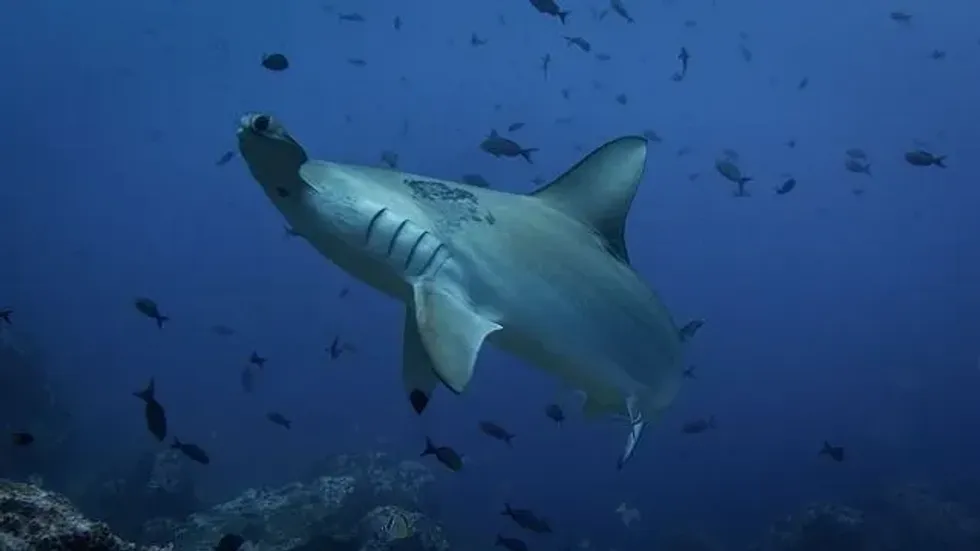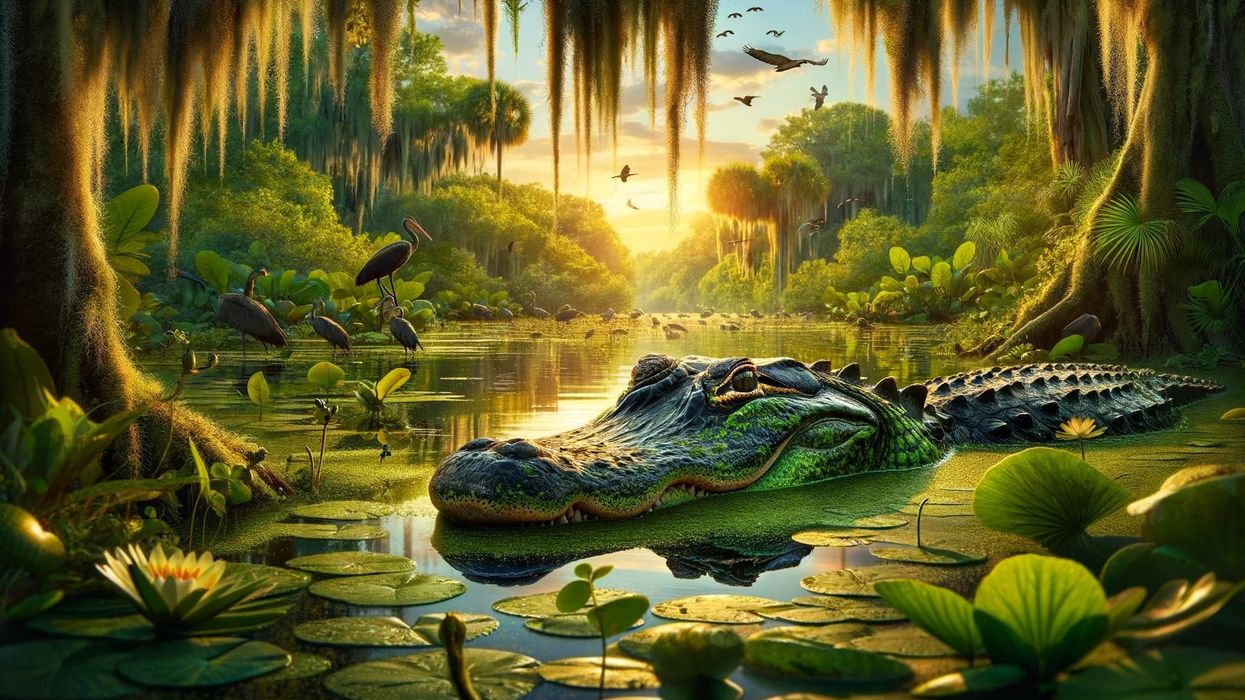Sharks are from the family of Elasmobranch fishes.
They belong to the Animalia kingdom and Chondrichthyes class. Like other fishes, they are cold-blooded, have fins, live in the water, and breathe with gills.
Many species that belong to the Chondrichthyes class are identified as cartilaginous fish. Cartilaginous fishes are those fish whose internal body consists of flexible cartilage and not bone.
There are nearly 500 species that form about 14-30 shark families. A few shark species include megamouth sharks, salmon sharks, tiger sharks, hammerhead sharks, white sharks, bullhead sharks, cat sharks, cookie-cutter sharks, carpet sharks, and many more.
Sharks have gray, yellow, black, white, and cream color depending on their family. Their skin is tough. They have a lifespan of 20-30 years.
They weigh about 1,500-4,000 lb (680 kg-1,810 kg). There are nearly five to seven slits in the shark's body at the side of their head for their gills. The length of the shark varies between 5.5-7 ft long (167 cm-213 cm).
Humans rarely see megamouth sharks as they are deep water sharks. Sharks' teeth don't have roots. The bull shark is said to have 50 rows of teeth.
Cookie-cutter sharks can swallow a squid as a whole. Bullhead sharks eat mollusks, crabs, and sea urchins and are harmless to humans. Similar to bullhead sharks, carpet sharks are bottom-feeders and eat mollusks and crustaceans.
If you enjoy reading such interesting and fun facts, check out articles on can sharks swim backwards or how many teeth do sharks have.
Do hammerhead sharks have tongues?
Sharks or other fish don't have true tongues like humans. Sharks have tongues that are called basihyal.
A shark's tongue is a short, tiny, thick piece of cartilage located on the floor of the mouth and throat of sharks and has no taste buds. The shark tongue is located at the base of the shark's mouth through which sharks breathe.
A shark's tongue is not muscular and has a minimal range of motion. Bullhead sharks and carpet sharks use their tongue to suck their prey or food from a long distance, whereas the cookie-cutter shark uses its wide tongue to rip chunks of flesh out of its prey.
These are sea animals that suck their prey, creating an oral vacuum inside their mouth. Some fish species have teeth on their tongues which helps them to hold prey.
Apart from these sharks, three shark species have different tongues that help them to eat food. These include carpet sharks, bullhead sharks, and cookie-cutter sharks.
Hammerhead sharks also have tongues like many sharks. They also taste food with papillae lining present on their mouth and throat. They are aggressive hunters and prey on smaller fish, squid, octopuses, and crustaceans. These sharks do not actively seek human prey but will attack if provoked.
Hammerhead sharks are named for their distinctive appearance with long, rectangular heads. These sharks have a 360-degree vision as well as better hunting abilities.
These sharks live along the coastline and the continental plates. These sharks migrate with the seasons, prefer warm bodies of water, and are only found in the ocean.
These hammerhead sharks are dense around Hawaii, Costa Rica, and eastern and southern Africa. These sharks are usually 3-20 ft (91 cm-610 cm) long and weigh between 300-1,000 lb (136 kgs-453 kgs).
They live for 20-30 years and travel at a speed of 20 mph (32 kph). They have long heads, allowing them to spread out their particular sensory organs, giving them a hunting advantage over other sharks.
The human tongue has many taste buds. Tongues are flexible, strong, and useful and move food inside the mouth, unlike tongues of sharks.
But a shark's taste buds do play a vital role in deciding if something is food or not. A shark's tongue is said to be the sensory organ of its body as sharks do not chew but swallow prey.
Can sharks stick their tongue out? A shark's so-called tongue is short, tiny, and stout with no taste buds. Hence, they cannot stick their tongue out of their mouth.
Sharks taste with the help of papillae lining the shark's mouth and throat. Taste receptors help the shark decide if the prey item is suitable before ingesting the item, and the shark usually doesn't taste the flesh of fish. Still, the equivalent of taste buds in a shark are used to find out about prey.
Sharks are called apex predators as they are at the top of the food chain and have few or no natural predators.
Do white sharks have tongues?
White sharks are said to be the largest and most prominent species that are aggressive and powerful predators. They have nearly 300 serrated, triangular teeth. These sharks are usually 18-26 ft (548cm - 792cm) long and weigh between 2,425-4,900 lb (1,100 kg-2,222 kg). They live for 30-40 years and travel at a speed of 15 mph (24 kph).
White sharks also have a tongue-like structure just like many sharks. They also taste food with the papillae lining present on their mouth and throat. These sharks attack sea animals or mammals like seals, sea lions, and dolphins. They are found worldwide, mostly in temperate and tropical coastal regions and also in open oceans.
Do baby sharks have tongues?

Baby sharks are born predators and start looking for their prey immediately, and they are also called pups.
Baby sharks also have tongues like most sharks. A baby shark's tongue also has no taste buds, and baby sharks taste with the help of papillae.
Sharks are born in three different ways: live birth, hatching from an egg, and an egg and live birth combination.
Pups are also grown in their mother's womb like humans. Many baby sharks do not survive their initial year. Young white sharks eat fish, including other sharks and rays. As they become adults, they eat sea animals or mammals, especially sea lions and seals.
Do tiger sharks have tongues?
Sharks are found in tropical waters around North America, South America, China, India, Australia, Indonesia, and Africa. These sharks are usually 10-14 ft (304cm-426cm) long and weigh between 850-1,400 lbs (385 kg - 635 kg).
They live for 30-40 years traveling at a speed of 20 mph (32 kph). They are the fourth biggest species of shark in the world and the second-largest predatory shark after the white shark!
Tiger sharks also have a tongue-like structure and are aggressive predators with sharp teeth. They also taste food with the papillae lining present on their mouth and throat.
Their prey is fishes, squid, sea birds, turtles, and smaller sharks. However, when they attack, they take a small bite first and then decide whether to eat or not. That is the reason that when a shark attacks a human, the attack usually consists of just one bite.
These sharks are also called garbage fish as they swallow many food particles or items other than their prey like plastic, empty cans or other garbage. Most sharks, like most fishes, are cold-blooded, or ectothermic. Predators of tiger sharks are killer whales and humans.
A shark's bite can cause massive tissue loss in humans. A shark's bite, however, results in cuts that are not deep or puncture wounds that do not cause blood vessel or nerve injury.
Some sharks have spiracles that force water across their gills, allowing for stationary rest. Sharks have active and restful periods, and they don't sleep like humans.
Here at Kidadl, we have carefully created lots of interesting family-friendly facts for everyone to enjoy! If you liked our suggestions for do sharks have tongues, then take a look at how do sharks sleep or how do sharks mate.










